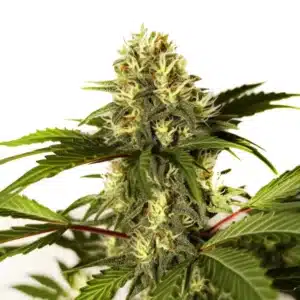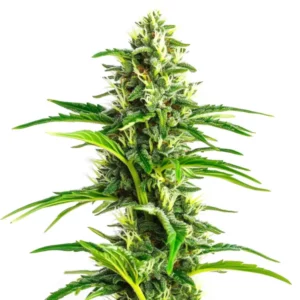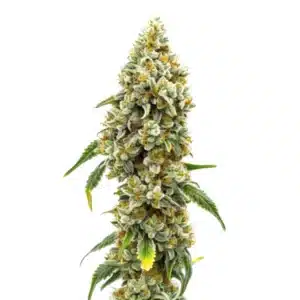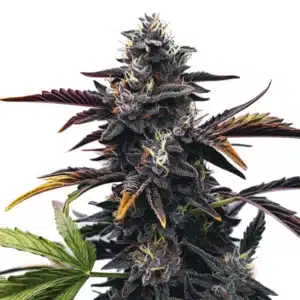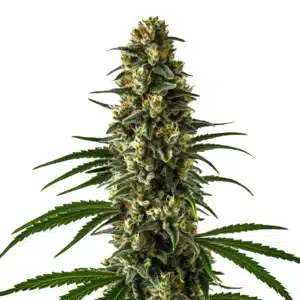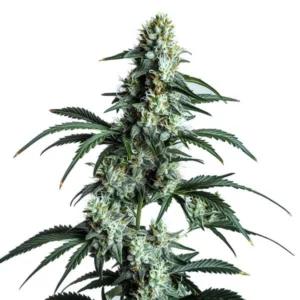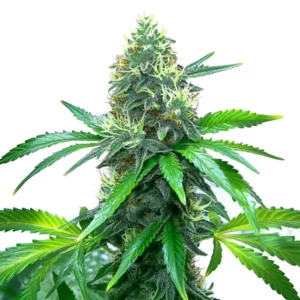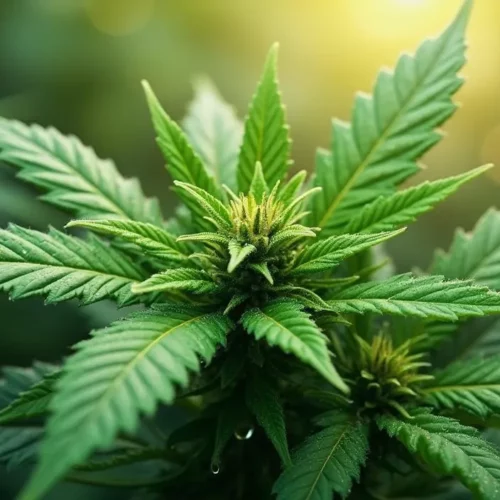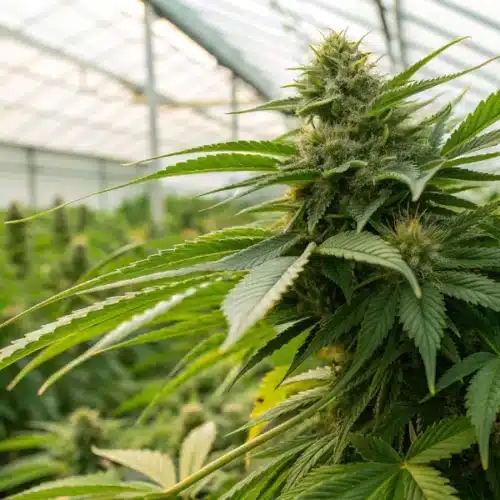
Choosing Enzymes for Cannabis Processing
When diving into cannabis processing, enzymes play a crucial role. They break down complex materials into simpler forms, making cannabinoid extraction more efficient. Choosing enzymes for cannabis processing is essential, as selecting the right one can significantly impact your yield and quality.
For both first-time buyers and experienced growers, understanding the nuances of enzyme selection can seem daunting. But fear not. With the right guidance, you can make informed choices that benefit your cannabis processing endeavors.
Recommended Strains
Somango
 THC: 16 - 21%
THC: 16 - 21% Type of seed: Feminized
Type of seed: Feminized Day to flower: 9 - 10 weeks
Day to flower: 9 - 10 weeks
Somango Auto
 THC: 12% - 14%
THC: 12% - 14% Type of seed: Autoflowering
Type of seed: Autoflowering Day to flower: 8 - 10 weeks
Day to flower: 8 - 10 weeks
Consider strains like Girl Scout Cookies, known for its high THC content. Pairing it with the right enzymes can maximize your extraction efficiency. Whether you’re optimizing enzymes for cannabis extraction or focusing on terpene preservation, your choices matter.
What to Look for in Enzymes
When choosing enzymes for cannabis processing, several factors come into play. First, consider the type of cannabis product you aim to create. This will guide your enzyme selection for cannabis distillation or cannabinoid isolation.
It’s essential to match the enzyme to the specific task. For example, some enzymes are better suited for breaking down cellulose, while others excel in protein degradation. This specificity ensures that you get the best enzymes for cannabis oil production.
Another critical consideration is the enzyme’s stability under varying conditions. Enzymes that remain active across a broad range of temperatures and pH levels provide more flexibility in processing. This adaptability can be crucial when dealing with different cannabis strains and extraction methods.
Additionally, the cost-effectiveness of the enzymes should be evaluated. While it might be tempting to opt for lower-priced products, investing in high-quality enzymes can lead to better yield and product quality in the long run. The initial investment can often be offset by the improved efficiency and output.
Optimal Enzymes for Cannabis Extraction
For those looking to optimize enzymes for cannabis extraction, focus on enzymes that can efficiently break down plant cell walls. This enhances the release of cannabinoids, making the extraction process smoother and more productive.
Using strains like White Widow can benefit significantly from these enzymes. Its resilience and high yield potential make it a favorite among growers looking to maximize output.
Choosing enzymes for cannabis processing that target specific components of the plant cell wall ensures a more complete extraction. Enzymes like cellulase and hemicellulase are particularly effective in breaking down complex carbohydrates, leading to a more efficient release of valuable compounds.
Moreover, the integration of enzyme blends designed specifically for cannabis can further enhance extraction efficiency. These blends often combine the optimal enzymes for cannabis extraction, ensuring that all plant materials are thoroughly processed, resulting in superior cannabinoid extraction.
Promos & Deals
Preserving Terpenes with Enzymes
Terpenes are volatile compounds that contribute to the aroma and flavor of cannabis. Preserving them is crucial for high-quality cannabis products. Choosing enzymes for cannabis terpene preservation is an art as much as a science.
Enzymes that work gently on plant material are ideal. They should facilitate the release of cannabinoids without degrading the delicate terpenes. This balance is vital for maintaining the distinctive characteristics of strains like Sour Diesel.
Top enzymes for cannabis terpene preservation are those that maintain their integrity under mild processing conditions. This ensures that the aromatic profile of the cannabis is preserved while still achieving effective cannabinoid extraction. Enzymes like pectinase are often employed for this purpose.
Furthermore, the timing and conditions under which enzymes are applied can significantly impact terpene retention. Implementing enzymatic processes at lower temperatures and shorter durations can help maintain the quality and intensity of the terpenes, enhancing the overall sensory experience of the final product.

Best Enzymes for Cannabis Oil Production
For cannabis oil production, the focus is on yield and purity. The best enzymes for cannabis oil production help in breaking down the plant material thoroughly, ensuring a clean extract. This process often requires a combination of enzymes.
Incorporating both cellulase and protease enzymes can enhance the extraction process. Cellulase breaks down cellulose, while protease targets proteins. Together, they ensure a comprehensive breakdown of the plant material.
When choosing enzymes for cannabis processing, it’s important to consider enzyme compatibility with your extraction method. This involves ensuring that the selected enzymes can work effectively within the parameters of your chosen extraction technology, whether it’s CO2, ethanol, or another method.
Additionally, monitoring the enzymatic activity and adjusting concentrations based on the specific characteristics of the cannabis strain can further optimize the oil production process. This tailored approach ensures that each batch achieves the highest possible quality and yield.
FAQs
What are the top enzymes for cannabis terpene preservation?
Choosing enzymes for cannabis processing that preserve terpenes involves selecting those that act gently on plant materials. Enzymes like pectinase, which breaks down pectins without harsh effects, are highly recommended. This enzyme ensures that the aromatic compounds remain intact.
Real-world scenarios show that strains with complex terpene profiles, like Sour Diesel, benefit significantly from these enzymes. The preservation of terpenes not only enhances flavor but also maintains the therapeutic properties associated with them.
In addition to pectinase, enzymes that target specific bonds in the plant matrix can also aid in maintaining the structural integrity of terpenes. This careful approach helps retain the full spectrum of flavors and aromas inherent in high-quality cannabis strains.
The choice of enzymes should also factor in the processing environment. Ensuring that the conditions under which the enzymes are used do not lead to terpene volatilization or degradation is crucial for maintaining the desired sensory attributes.
How can I optimize enzymes for cannabis extraction?
Optimizing enzymes for cannabis extraction involves selecting those that target the plant’s cellular structure. Enzymes that effectively break down cellulose and hemicellulose are ideal. They facilitate the release of cannabinoids, increasing the efficiency of the extraction process.
Consider using enzyme blends tailored for cannabis processing. These blends often contain a mix of cellulase and hemicellulase, ensuring a thorough breakdown of the plant material. The result is a higher yield with improved cannabinoid content.
Another strategy for optimizing enzymes involves experimenting with different concentrations and formulations. By adjusting enzyme dosages and combinations, you can fine-tune the extraction process to suit specific strains and extraction goals.
Additionally, keeping abreast of advancements in enzyme technology can provide new opportunities for optimizing cannabis extraction. Emerging enzymes with enhanced activity and specificity can offer improved performance and efficiency in cannabinoid isolation.
What should I consider in enzyme selection for cannabis distillation?
Enzyme selection for cannabis distillation focuses on purity and efficiency. The right enzymes should facilitate the breakdown of unwanted plant materials, leaving behind a pure cannabinoid extract. This is crucial for producing high-quality distillates.
Look for enzymes that offer high specificity. Specific enzymes target unwanted compounds, ensuring they are efficiently removed during distillation. This results in a cleaner, more potent distillate, enhancing the overall quality of the product.
Attention should also be given to the compatibility of enzymes with different distillation techniques. Enzymes that are stable at higher temperatures and pressures can be particularly advantageous in maintaining the integrity of the distillation process.
Moreover, enzyme formulations that minimize the formation of by-products and impurities are essential for achieving the highest purity levels in distillates. Selecting the best enzymes for cannabis distillation requires a balance between activity, stability, and compatibility with the distillation method employed.
Are there specific enzymes for cannabinoid isolation?
Yes, choosing enzymes for cannabinoid isolation involves selecting those that can efficiently separate cannabinoids from other plant components. Enzymes like proteases and glycosidases are commonly used for this purpose.
These enzymes target specific bonds within the plant structure, allowing for the selective extraction of cannabinoids. This is particularly beneficial when working with strains like White Widow, where purity and cannabinoid concentration are priorities.
The process of choosing enzymes for cannabinoid isolation also involves assessing the enzyme’s ability to facilitate clean separation without introducing contaminants. This ensures that the isolated cannabinoids maintain their desired properties and quality.
Additionally, the efficiency of enzyme-based isolation can be enhanced by integrating other separation technologies. Combining enzymatic processes with techniques like chromatography can lead to more precise and efficient cannabinoid isolation, maximizing both yield and purity.
How do I ensure I’m using the best enzymes for cannabis oil production?
Ensuring you have the best enzymes for cannabis oil production involves understanding the specific needs of your process. Start by identifying the primary components of your plant material. This will guide your enzyme selection, ensuring compatibility and effectiveness.
Experiment with different enzyme combinations to find what works best for your specific strain. For example, using a mix of cellulase and protease can enhance oil yield and quality. This approach is particularly effective with high-yield strains like Girl Scout Cookies.
Regular monitoring and adjustment of enzyme activity can further refine the oil production process. By systematically evaluating enzyme performance, you can make informed decisions that optimize both the quality and quantity of the oil extracted.
Moreover, collaborating with enzyme manufacturers to develop customized enzyme formulations tailored to your specific needs can yield significant benefits. These bespoke solutions can address unique challenges and enhance the overall efficiency of cannabis oil production.



